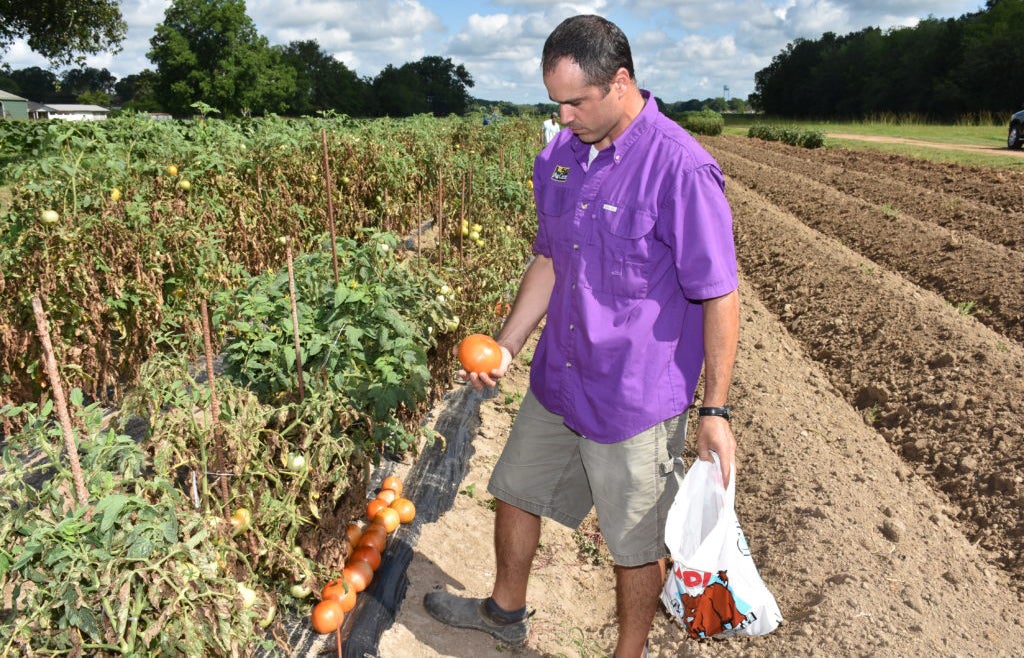It’s a great time to grow potatoes
Published 12:00 am Wednesday, January 20, 2021
|
Getting your Trinity Audio player ready...
|
I remember following my grandfather around his vegetable garden when I was young, every chance I had. “Pappy” let us grandkids pick beans, tomatoes and every other vegetable under the sun. We enjoyed it all, but the highlight was potato time. Pappy would let us dig around the plants with our hands, hopefully exposing some good-sized spuds. If we found some, he’d get a shovel and carefully dig under the plant. As he lifted it up, potatoes would drop from the roots, and we’d scramble to grab them like it was a Reserve-grown Cajun piñata. Then we’d dig all around and find more loose ones in the soil.

Though Pappy had a special magic, I now know it’s not that hard. Start with fertile, well-drained soil; maybe that spot cabbage and cauliflower just vacated. Potatoes must fight to make roots and tubers if the soil is hard clay. You may be able to improve an area by adding lots of sand and organic matter.
Nurseries sometimes carry “seed potatoes,” which are whole potatoes you’ll start with. Recommended LSU varieties include ‘Red LaSoda’ and ‘Norland.’ Grocery store potatoes are not technically recommended, but I’ve had success with them in the past. They even carry LSU-recommended ‘Yukon Gold’ sometimes, a creamy variety that’s one of my favorites.
The other option is ordering online or from a seed catalog. I want to grow ‘Purple Majesty’ this year (native to South America, they come in many colors) and could only find them online. The major drawback (besides shipping cost) is that the areas growing seed potatoes are covered in ice this time of year. Opening day for recommended spring planting in Louisiana is January 20, and we’re supposed to finish by the end of February. I’m hoping my supplier in Maine gets
an early thaw; otherwise I may try and hold them until fall.
Cut the seed potatoes into chunks about 1.5 to 2 ounces (about the size of an egg.) Be sure each piece has an eye on it. This is where the roots and stem will emerge, which you know if you ever left potatoes on the shelf too long. Spread them out in a dry place for a few days to a week before planting so the cuts will callus over. It’s not 100 percent necessary but can lead to fewer rotten / failed potatoes. I also like to dust freshly cut lumps in sulfur to the same end, though this is not mentioned in “official” recommendations.
Scatter (and preferably till in) about half a pound of 13-13-13 or a little more than half a pound of 8-8-8 fertilizer a week or two before planting. Once the pieces are dry, plant them four inches deep and a foot apart. A thick layer of mulch will help keep down weeds until the canopy shades them out. It’s also good to cover any potatoes that may stick up through the soil and turn green if exposed to sunlight. Once they’re about 6-10 inches tall, side-dress with nitrogen (ammonium sulfate or similar) at a tenth of a pound per 10-foot row; or about a teaspoon per plant.
After 90 to 110 days, plants should be flowering, turning yellow, and dying. See the first paragraph for harvesting instructions. Don’t forget to point and shout every time you find a potato, especially if the kids or grandkids are around.
If you want to know more about gardening, landscaping, or anything else horticultural, contact the St. John & St. James Parishes County Agent André Brock at abrock@agcenter.lsu.edu. Also, the LSU Ag Center’s website can be accessed at www.lsuagcenter.com with lots of user-friendly information, including this article.





